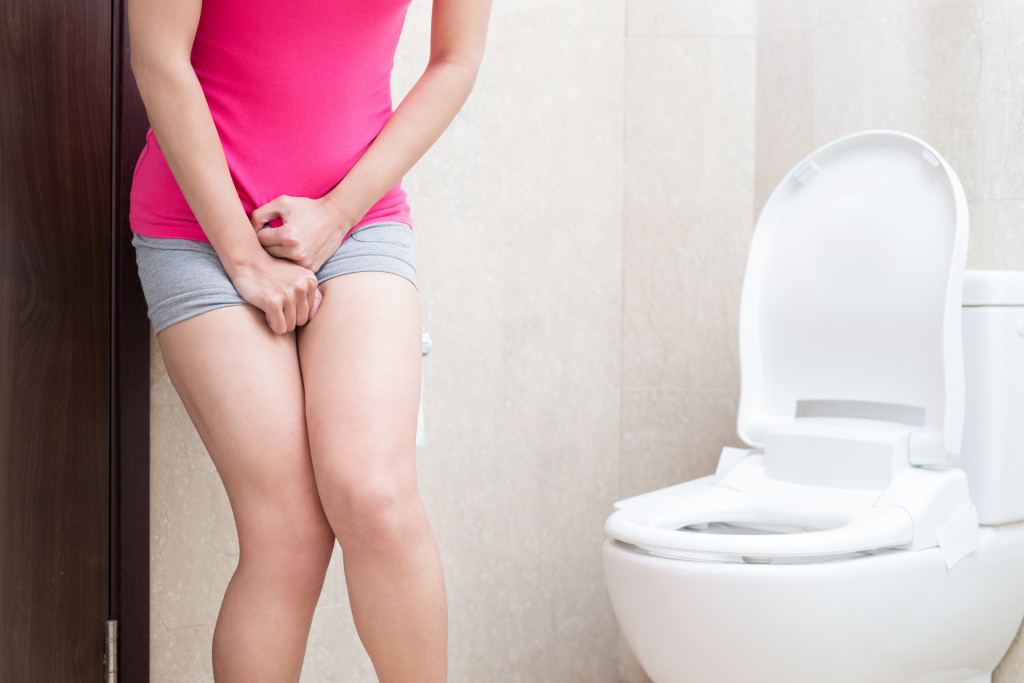• Urinary incontinence is common among women of all ages and can be caused by weak pelvic floor muscles.
• Treatment options for urinary incontinence include bladder training techniques, taking medications, or even surgical procedures.
• Lifestyle changes such as quitting smoking and losing weight can help reduce incontinence symptoms.
• Kegel exercises are an excellent way to strengthen the pelvic floor muscles and improve bladder control.
Urinary incontinence is a common issue that affects many women of all ages. It involves the loss of bladder control and can cause embarrassing symptoms such as leaks and accidents. Fortunately, there are often strategies to help address this issue. If you’re experiencing urinary incontinence, know that you are not alone, and there are steps you can take to minimize the symptoms and lead a more comfortable life.
Understanding the Different Types of Urinary Incontinence
The first step toward addressing urinary incontinence is understanding what type of incontinence you may have. There are three primary types of urinary incontinence—stress, urge, and mixed.
Stress Incontinence
Stress incontinence occurs when pressure on your bladder or urethra leads to accidental leakage during activities such as sneezing or coughing. It is most common among those who have had a baby or are overweight. In addition, it can be caused by weak pelvic floor muscles or certain medical conditions such as diabetes.
Urge Incontinence
Urge incontinence occurs when the urge to urinate suddenly becomes too strong to ignore. This happens when the bladder muscles contract involuntarily, leading to a sudden and urgent need to go. An infection or irritation can cause urge incontinence in the urinary tract, bladder stones, certain medications, or even neurological conditions such as Parkinson’s.
Mixed Incontinence
Mixed incontinence is a combination of the two types of incontinence described above. This type of incontinence is most common in older women, as the bladder and pelvic floor muscles become weaker with age. This may also be experienced after pregnancy or childbirth.
Treatment Options for Urinary Incontinence
Once a diagnosis of urinary incontinence is made, various treatment options are available depending on the type and severity of the symptoms. These may include the following:
Try Bladder Training Techniques
Once your doctor has determined which type of urinary incontinence you have, they may recommend trying bladder training techniques as an initial treatment. Bladder training involves the following:
- Scheduling your trips to the bathroom: Set a timer and try to increase the amount of time you wait between trips to the bathroom.
- Delaying urination: Once you feel the urge, take deep breaths and wait a few minutes before going.
- Pelvic floor muscle training: Strengthening these muscles through exercises can help improve bladder control.
- Limiting fluid intake: Reducing your fluid intake to the recommended amount for your age and activity level may help minimize leaks and accidents.

Look Into Medication Options
In some cases, medication may also be recommended as an additional treatment for urinary incontinence. Common medications prescribed include antimuscarinics (which helps relax muscles), estrogen therapy (which helps reduce inflammation), or alpha-blockers (which helps reduce spasms). Additionally, other medications may be prescribed to treat underlying conditions or infections such as overactive bladder or UTIs.
Look Into Surgical Options
In some cases, a doctor may recommend surgery as an option to treat urinary incontinence. Most commonly, this includes procedures such as:
- Sling surgery: Involves placing a mesh sling under the bladder that helps support the urethra and vaginal wall. It provides a physical barrier between the bladder and urethra, which can help reduce leakage during physical activity.
- Bulking agents: These are injected into the bladder wall to thicken it, making it easier for you to control your bladder muscles and reduce leakage.
- Injectable therapies: Injection therapy involves injecting collagen or other fillers into the walls of the vagina to provide more support for the bladder. It provides an alternative to surgical options for those who may not be candidates or don’t want the risks associated with surgery.
- Vaginal tightening: Vaginal tightening procedures involve tightening the vaginal muscles to improve bladder control. It helps by providing more support for the bladder, urethra, and surrounding pelvic muscles.
Lifestyle Changes

Making lifestyle changes, such as quitting smoking or losing weight, can also help reduce symptoms of urinary incontinence. Additionally, avoiding bladder irritants like caffeine and alcohol may also be beneficial in helping manage symptoms. If you are overweight or obese, losing weight can also help reduce symptoms.
Finally, Kegel exercises are an excellent way to strengthen your pelvic floor muscles and improve bladder control. It involves repeatedly contracting and relaxing the muscles around your pelvic floor throughout the day. As you strengthen these muscles, it can help improve bladder control and reduce leakage.
It is important to remember that urinary incontinence is a common issue, and many treatment options are available. Consulting your doctor can help you determine the best action to address your symptoms and live a healthier, more comfortable life. With the right treatment plan, you can address your urinary incontinence and find relief from its effects.


